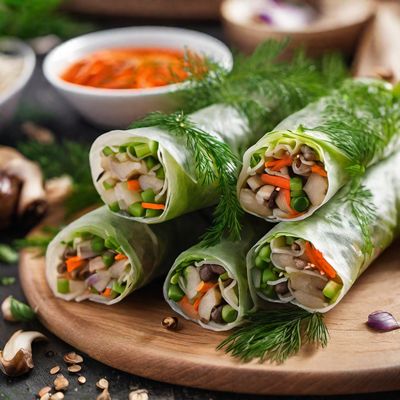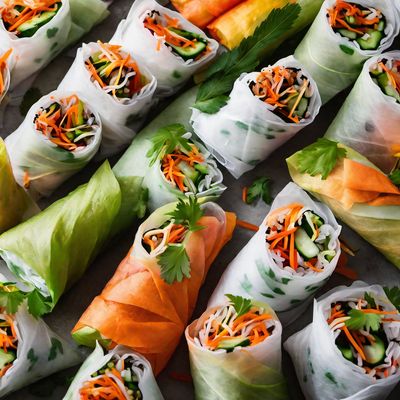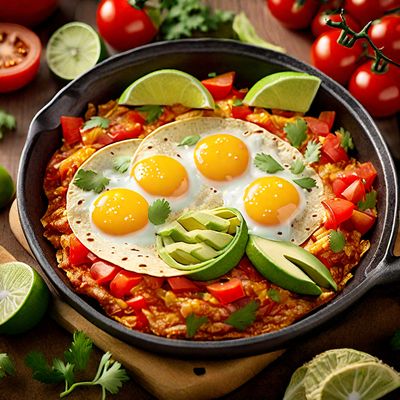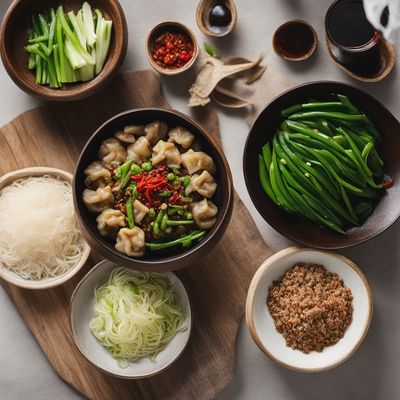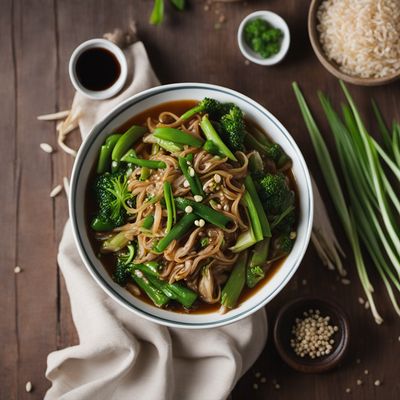
Recipe
Molecular Gastronomy Spring Rolls
Revolutionary Spring Rolls: A Molecular Twist on a Classic
4.9 out of 5
In the realm of molecular gastronomy, we reimagine the traditional Chinese spring rolls, infusing them with innovative techniques and flavors. This avant-garde adaptation combines the essence of Chinese cuisine with the artistry of molecular gastronomy, resulting in a visually stunning and delectable dish.
Metadata
Preparation time
30 minutes
Cooking time
10 minutes
Total time
40 minutes
Yields
4 servings
Preparation difficulty
Medium
Suitable for
Vegetarian, Vegan, Gluten-free, Dairy-free, Low-calorie
Allergens
Soy, Gluten
Not suitable for
Nut-free, Soy-free, Paleo, Keto, High-protein
Ingredients
While the original Chinese spring rolls are typically made with a thin wheat-based wrapper and filled with a mixture of vegetables, meat, and/or seafood, our molecular gastronomy version takes a more experimental approach. We will use edible film made from agar-agar to encase a burst of flavorful gel spheres, creating a unique and surprising texture. We alse have the original recipe for Spring Rolls, so you can check it out.
-
10g (0.35oz) agar-agar powder 10g (0.35oz) agar-agar powder
-
500ml (2 cups) water 500ml (2 cups) water
-
100g (3.5oz) assorted vegetables, finely diced 100g (3.5oz) assorted vegetables, finely diced
-
100g (3.5oz) protein of choice (tofu, chicken, shrimp), finely diced 100g (3.5oz) protein of choice (tofu, chicken, shrimp), finely diced
-
50ml (1.7oz) soy sauce 50ml (1.7oz) soy sauce
-
30ml (1oz) rice vinegar 30ml (1oz) rice vinegar
-
10g (0.35oz) ginger, grated 10g (0.35oz) ginger, grated
-
5g (0.18oz) garlic, minced 5g (0.18oz) garlic, minced
-
5g (0.18oz) sugar 5g (0.18oz) sugar
-
2g (0.07oz) salt 2g (0.07oz) salt
-
10ml (0.3oz) vegetable oil 10ml (0.3oz) vegetable oil
-
10g (0.35oz) cilantro, chopped 10g (0.35oz) cilantro, chopped
-
10g (0.35oz) mint leaves, chopped 10g (0.35oz) mint leaves, chopped
-
10g (0.35oz) basil leaves, chopped 10g (0.35oz) basil leaves, chopped
Nutrition
- Calories (kcal / KJ): 150 / 628
- Fat (total, saturated): 5g, 1g
- Carbohydrates (total, sugars): 20g, 5g
- Protein: 8g
- Fiber: 4g
- Salt: 2g
Preparation
-
1.In a saucepan, combine the agar-agar powder and water. Bring to a boil, stirring constantly until the powder is fully dissolved. Remove from heat and let it cool slightly.
-
2.Pour the agar-agar mixture into a flat container and refrigerate until set. Once set, cut the agar-agar into small squares.
-
3.In a separate bowl, mix the diced vegetables, protein, soy sauce, rice vinegar, ginger, garlic, sugar, and salt. Let it marinate for 15 minutes.
-
4.Heat the vegetable oil in a pan over medium heat. Add the marinated mixture and cook until the vegetables are tender and the protein is cooked through.
-
5.Remove from heat and let the mixture cool. Stir in the chopped cilantro, mint leaves, and basil leaves.
-
6.Take a square of agar-agar film and place a spoonful of the vegetable-protein mixture in the center. Fold the film to encase the filling, creating a small pouch. Repeat with the remaining ingredients.
-
7.Serve the molecular gastronomy spring rolls chilled, allowing the diners to experience the burst of flavors and unique texture.
Treat your ingredients with care...
- Agar-agar — Ensure the agar-agar powder is fully dissolved in the water to achieve a smooth gel texture.
- Protein of choice — Make sure to finely dice the protein to ensure even cooking and distribution within the spring rolls.
- Vegetables — Finely dice the vegetables to create a harmonious texture and flavor profile.
- Herbs — Chop the cilantro, mint, and basil leaves just before adding them to the filling to preserve their freshness and aroma.
- Agar-agar film — Handle the film gently to avoid tearing or breaking it while assembling the spring rolls.
Tips & Tricks
- Experiment with different fillings and flavors to create your own unique molecular gastronomy spring rolls.
- For an extra burst of flavor, add a few drops of flavored oils or vinegars to the filling mixture.
- Serve the spring rolls on a bed of microgreens or edible flowers for an elegant presentation.
- If agar-agar film is not available, you can use rice paper wrappers as a substitute.
- To enhance the visual appeal, garnish the plated spring rolls with edible gold or silver flakes.
Serving advice
Serve the molecular gastronomy spring rolls as an appetizer or part of a tasting menu. Encourage diners to eat the spring rolls in one bite to fully experience the burst of flavors and textures.
Presentation advice
Arrange the molecular gastronomy spring rolls on a sleek, modern plate. Consider using a minimalist plating style to highlight the vibrant colors of the filling and the translucent agar-agar film.
More recipes...
For Spring Rolls » Browse all
For Chinese cuisine » Browse all
For Molecular gastronomy » Browse all
More Chinese cuisine dishes » Browse all

Chang ying tou
Squirrel-shaped Mandarin Fish
Chang ying tou is a traditional Chinese dish that consists of stir-fried chicken and vegetables served over a bed of crispy noodles. The dish is...
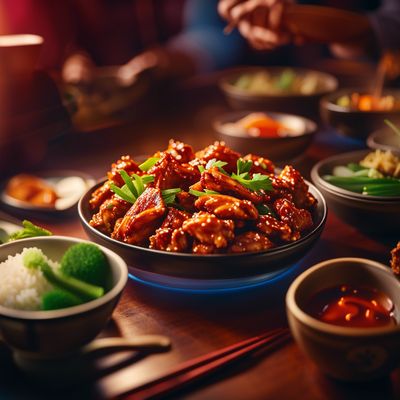
General Tso's Chicken
General Tso's Chicken is a popular Chinese-American dish that is made with crispy fried chicken and a sweet and spicy sauce. It is a flavorful and...

Dou fu fa
Dou Fu Fa
Dou fu fa is a traditional Chinese dessert made from silken tofu, sugar, and ginger syrup. It is usually served cold and is a perfect dessert...
